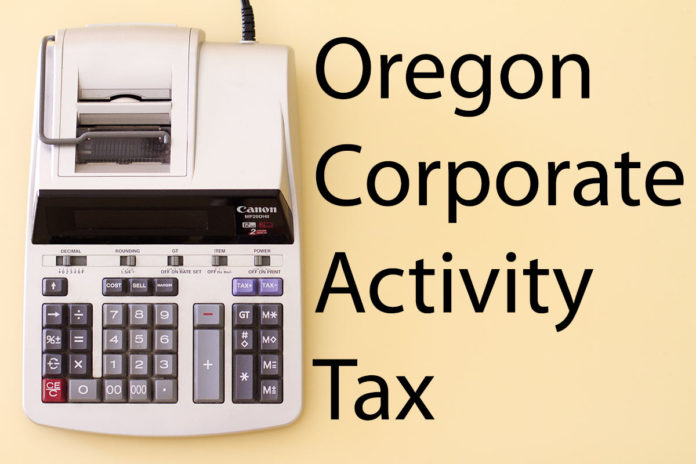
Oregon’s landmark legislation House Bill (HB) 3427 (the “Student Success Act”) was passed by the Senate on May 13, 2019, and signed by the governor on May 16, 2019. Effective Jan. 1, 2020, the new law is projected to raise nearly $2 billion per biennium by imposing a new Corporate Activity Tax (CAT) based on a taxpayer’s Oregon-sourced commercial activity. Oregon joins five other states using a tax based on gross receipts as a state funding mechanism.
Any company based in Washington doing business with Oregon customers, whether delivering product or delivering services to Oregon-based customers, should absolutely be considering the effects of this tax on their business. At a very minimum, they should be aware it exists and what exposure, if any, exists to their business.
What is the CAT?
A tax of 0.57% will be imposed on businesses with taxable commercial activity in excess of $1 million, plus an additional tax of $250.
Who is subject to the New Corporate Activity Tax?
Most business industries and every tax structure doing business in Oregon are subject to the Corporate Activity Tax. The Oregon Department of Revenue has been sending information letters to potentially affected taxpayers for the past few months, notifying them of the new tax.
If you or your business have received one, it does not necessarily mean that you will be impacted by the tax; however, many will. All businesses doing business in Oregon, regardless of entity type, must register within 30 days of exceeding $750,000 in Oregon-sourced commercial activity in the calendar year. Penalties will be assessed for failing to register timely.
Is all commercial activity taxed?
No, only Oregon-sourced commercial activity is taxed, and there are specific forms of income excluded from the definition of commercial activity, including:
- Interest and dividends (except on credit sales)
- Receipts from the sale or disposition of capital assets subject to IRC §1221 or §1231
- Excise tax paid on receipts from the sale of alcohol, marijuana and tobacco
- Receipts from the wholesale or retail sale of groceries
- Receipts to Oregon wholesalers who certify those goods will be sold outside of Oregon
Determining the extent to which your commercial activity is sourced to Oregon depends on the type of receipts your business generates, but generally is as follows:
- For the sale, rental, lease or license of real property – to the extent the property is in Oregon
- For the sale of tangible personal property – to the extent product is delivered to a purchaser in Oregon
- For the sale, lease, or rent of licenses and intangibles – to the extent the property, or rights to use the property, are used in Oregon
- For the sales of services – to the extent the services are delivered to a location in Oregon
Eligible subtraction
- Businesses subject to the tax may deduct from their gross receipts either 35% of labor or 35% of cost inputs after apportionment, whichever is larger.
- Cost inputs are defined as the cost of goods sold as calculated in arriving at federal taxable income under the Internal Revenue Code.
- Labor costs are defined as total compensation paid to all employees. Excluded from the total is any compensation paid to any single employee in excess of $500,000.
- Cost inputs and labor are apportioned to Oregon in the same manner they are apportioned for income tax purposes.
- The eligible subtraction cannot exceed 95% of Oregon-sourced commercial activity.
What does all of this mean to me and my business?
The corporate activities tax is a new tax and will be in addition to any tax your business is currently paying, not instead of.
How can I estimate my CAT?
Step 1: Determine your commercial activity ratio
- Oregon commercial activity / (everywhere commercial activity plus exclusions) = commercial activity ratio (rounded to four decimal places)
Step 2: Determine your cost subtraction
- Commercial activity ratio X total labor costs X 35% = labor costs apportioned to Oregon
- Commercial activity ratio X total cost inputs X 35% = cost inputs apportioned to Oregon
- The greater of either your labor costs apportioned to Oregon of your cost inputs apportioned to Oregon is your cost subtraction. Your cost subtraction may not exceed 95% of your Oregon commercial activity. Alternative calculation methods may be available to you and your industry.
Step 3: Determine your taxable Oregon commercial activity
- Oregon commercial activity – cost subtraction = taxable Oregon commercial activity
Step 4: Determine your Oregon Corporate Activity Tax liability
- (Taxable Oregon commercial activity – $1 million threshold) X .57% tax rate + $250 = Oregon Corporate Activity Tax Liability
Estimated payments will be required for businesses that will exceed $5,000 of Corporate Activity Tax. The first estimated payments for 2020 will be due April 30. To clarify many issues surrounding the new tax, the Oregon Department of Revenue has published 12 administrative rules which are temporary and effective for the next 180 days. Additional rules will be published in February and March of 2020. The 12 temporary rules can be found on the Secretary of State’s website. Rules for the CAT can be found by searching current rules for Chapter 150, Division 317.
Sean Wallace, CPA, is tax senior manager at Perkins & Co. He can be reached at swallace@perkinsaccounting.com or call 503-221-0336. The Perkins & Co. Vancouver office can be reached at 360-397-0097.







